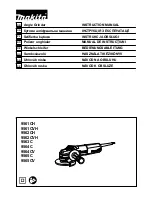
16
5. Safety Information
In case of damage caused by non-compliance with these operating instructions, the warranty/
guarantee will expire. We do not assume any liability for consequential damage!
We do not assume any liability for damage to property or personal injury caused by improper use or
the failure to observe the safety instructions! In such cases the warranty/guarantee will expire.
Normal wear and tear during operation (e.g. worn-out gear wheels or servo transmission) are excluded from the
guarantee and warrantee, the same applies to accidental damage (e.g. broken bearing retainer or rotor blades).
Dear customer, these safety instructions are not only for the protection of the product but also for your own safety
and that of other people. Therefore, read this chapter very carefully before taking the product into operation!
a) General Information
Caution, important note!
Operating the model may cause damage to property and/or individuals. Therefore, make sure that you are
sufficiently insured when using the model, e.g. by taking out private liability insurance. If you already have private
liability insurance, verify whether or not operation of the model is covered by your insurance before commissioning
your model.
Note: In some EU countries, you are required to have insurance for any flying models!
• The unauthorized conversion and/or modification of the product is prohibited for safety and approval reasons (CE).
• This product is not a toy and not suitable for children under 14 years of age.
• The product must not become damp or wet.
• If you do not have sufficient knowledge yet of how to operate remote-controlled models, please contact an experienced
model sportsman or a model construction club.
• Do not leave packaging material unattended. It may become a dangerous toy for children.
• Should any questions arise that are not answered with the help of these operating instructions, contact our “Technical
Advisory Service” (for contact information see chapter 1) or another expert.
b) Before Commissioning
• Strictly comply with the order indicated by the manufacturer for commissioning of the remote control system. Usually, the
transmitter must be connected to the speed controller first, and then the helicopter’s flight battery.
If the model is not operated with a 2.4 GHz remove control system, observe that no other transmitter must be operated
at the same remote control channel at the same time.
• Check the functional reliability of your model and of the remote control system. Watch out for any visible damage such as
defective plug connections or damaged cables. All moving parts of the model must run smoothly but should not have any
play in their bearings.
• Charge the flight battery, which is necessary for operation, as well as the rechargeable battery that may be inserted in the
remote control according the manufacturer’s instructions.
• Before operation, always control the trim settings of the on the transmitter for the various steering directions and, if
necessary, adjust them.
• Select an appropriate site for the operation of your model helicopter.
• Before every commissioning, perform a range check for your remote control system according to manufacturer information.
















































